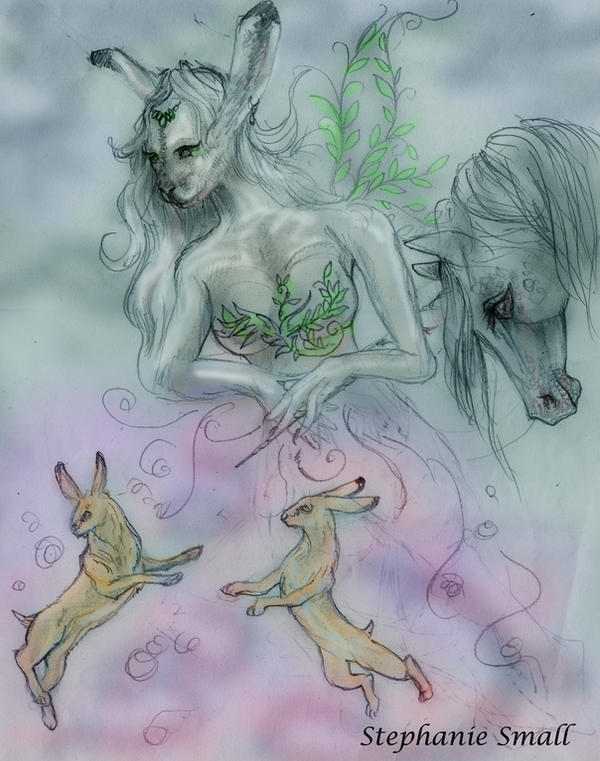The Easter Bunny is a unique creature since it is a cross between a lagomorph, or rabbit and a bird. It can lay eggs! It is very intelligent and swift. It eats food much like the rest of us, it chews it in the mouth, swallows it, where it enters the esophagus and travels down to the stomach. Eventually food moves into the small intensive, and unlike you and me, the fiber is divided in the colon into digestible and indigestible food. The pellets the Bunny leaves as droppings are round and hard and are from the indigestible food. The food that is digestible is processed in the caecum by special bacteria that helps break down some of the fiber for nutrients. Some of this food needs to go back through the small intestine, so a special mucus coats the droppings which are now called cecotropes, or cecal droppings. The rabbit then eats the droppings. Eating these droppings is called cacogaphy. The small intestine can now break down these cecotropes. This means the bunny has a very special diet that needs to process the correct food.
As for the eggs that the Easter Bunny lays, these are different from what a normal bunny does, since they normally have live births and usually the males do not have the baby rabbits, or kits, let alone lay eggs. Normal rabbits start out life as kits and they give birth to a group of bunnies, which is called kindling. The Easter Bunny is unique in that it is a male, or buck, and yet it also has the ability to lay eggs like a female rabbit, or doe. Some rumors say that this is because it is the Goddess Ostara, a spring goddess, transformed a bird into a rabbit because it could no longer fly. Some say she gave the ability to lay eggs to a once-normal hare. Other rumors state that the Easter Bunny is actually the Goddess Ostara herself! Only she and the Bunny know the real truth. The Easter Bunny eggs are also multicolored and come with patterns and designs on them. Although the Easter Bunny was originally a male, it was granted the power to be able to lay eggs. He may also lay many eggs in one day, especially on Easter Day.

He lays eggs similar to a tinamou, which is a type of bird. This bird lays eggs that are unique, which means they are iridescent in nature. The iridescence varies the color depending on the angle in which you look at the egg. In addition, the egg’s base pigment, or color, varies with each egg, which makes it different from normal bird eggs. The patterns on the eggs are unique to the Easter Bunny, sometimes displaying stripes, spots or even spiral patterns.
Rabbits can see very well, and have very good senses. They can see in nearly all directions at once! They cannot see directly right in front of their noses though. This is called a blind spot. Other than excellent sight, the Easter Bunny has very good ears, like most bunnies. Rabbits have large ears because they can move them independently, so one can point forward, and the other one can point backward. This helps them evade predators in the wild. Also, because bunnies do not sweat, they are able to loose a lot of heat from their ears. Most rabbits are sensitive to the heat and they need to be able to cool themselves off.
They have very strong hind legs. This means they are very good at jumping. It is said that the Goddess Ostara healed a wounded bird that had its wings frozen off from the winter weather. She turned it into a rabbit so it would be able to jump and still connect with what it remembered as flight. This is why it can lay eggs, its to remind the Easter Bunny that it was once a bird. Some stories say that the Goddess herself turned from a woman to a bird, then into a bunny. She then ran around laying colorful eggs for children, just like you! Rabbits can stand on their hind legs. This is so they can see higher up, and make sure there are no predators nearby.
No comments:
Post a Comment